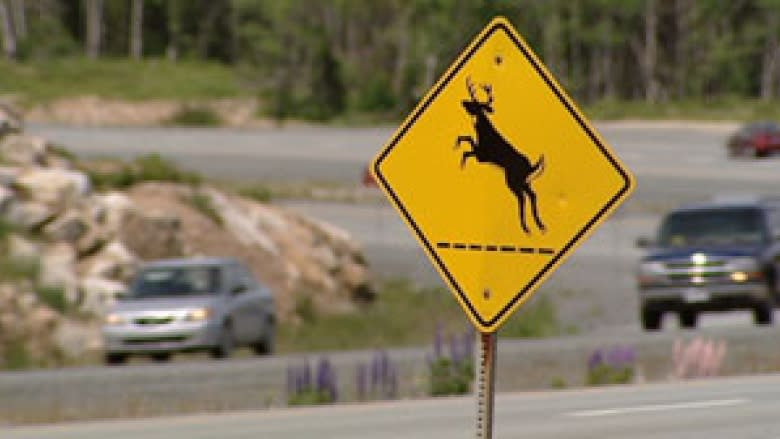The challenge of keeping animals off busy Eastern Township highway
A series of cameras are going to be installed at key positions on Highway 10 in the Eastern Townships as part of a plan to keep wildlife off the roads.
Collisions with animals caused 150 accidents on the stretch of highway between Bromont and Orford last year, according to the Quebec Transport Ministry.
And that count only includes collisions where the animal was still on the scene when authorities arrived.
To help prevent these accidents, the non-profit nature conservation group Appalachian Corridor wants to create a "green corridor" in southern Quebec by either adapting existing, or building new, infrastructure.
"The cameras are going to help us gather key data about what exactly needs to be adapted and where," said Caroline Daguet, a biologist with Appalachian Corridor.
"We want to make sure we have it right."
Townshippers know the risk well
It's not only small animals — otters or minks — that are struck on the roads of the Eastern Townships. Larger mammals like moose, bears and especially deer are also common roadkill.
"White-tail deer are the most common. Almost 90 per cent of all road kills are deer on Highway 10," said Daguet. "These are not small animals. They can cause major damage and major accidents."
It's a risk many Townshippers know all too well. Just ask former Orford mayor Pierre Bastien.
His wife had to have facial reconstruction surgery and Bastien suffered minor injuries when he struck a moose this past summer.
"It was just exiting a curve and he was stopped on my way," said Bastien about his encounter with the moose, which happened after a dinner with friends on July 17. "I never saw the animal in fact, I just saw legs."
I got to see the animal after, and I didn't take measurements or anything, but it was a big animal. Huge."
Mapping the corridors
The Appalachian Corridor has been mapping areas where wildlife attempt to cross Highway 10.
"On either side of the highway is major, almost uninterrupted forest," said Daguet. "So a deer in the Sutton area sees Mount Orford and wants to go. The highway is a roadblock for the wildlife."
The non-profit group has trained highway patrol officers to better identify and log the species they come across at collision sites. The data collected reveal three key sites between the Granby and Sherbrooke exits where animals are more likely to cross.
These are the sites where the cameras will be installed. Daguet says the animals are naturally drawn to crossings that seem safe and simple tools, like fencing, can be used to guide them.
The important thing now is to know exactly where to put them.
"With the cameras, we really want to see the behaviour of the animals," said Daguet.
"Where do they cross successfully under the highway? Where do they start to cross and then turn back? And what infrastructures do they not approach at all."
Long-term solution
Daguet says the plan is to work with the Transport Ministry to adapt currently existing culverts and bridges to make them safe and usable for animals looking to cross. Building entirely new infrastructure for wildlife would be a last resort due to costs.
"Little changes, like making them a little taller or a little wider and brighter is all that is needed most of the time,"said Daguet.
The biologist is warning the public not to hold its breath quite yet for major changes. She says the project still has 18 months to two years of data gathering left. It could be four to five years before the first purpose-built infrastructure pops up.
"Ultimately with our partners in the [United] States, I hope one day a deer can travel from Massachusetts to Orford without crossing on a highway," said Daguet.
"We're not quite there yet."




